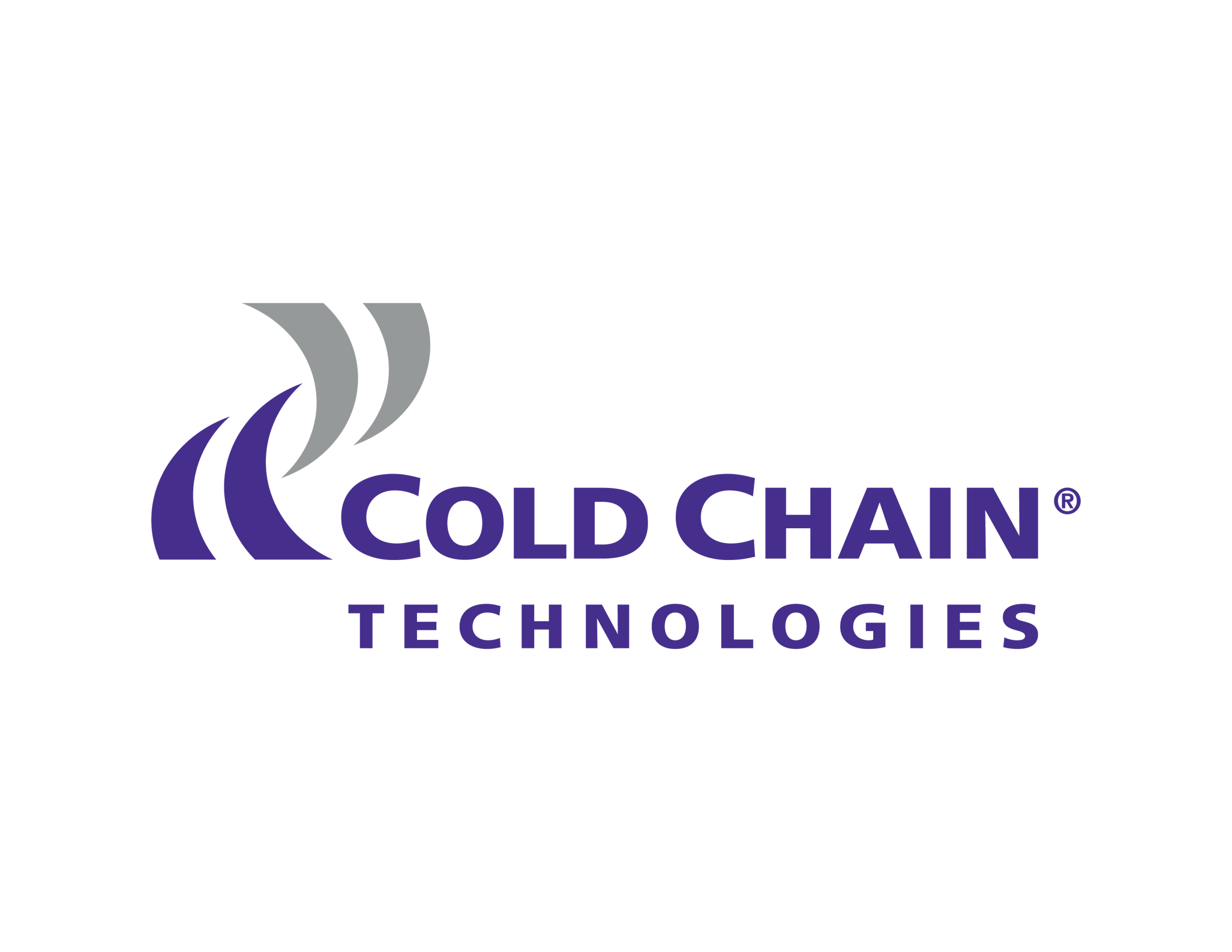A cold chain product is any product that is temperature sensitive. Examples of cold chain products include pharmaceuticals, vaccines, biologics, lab samples, diagnostic materials, chemicals, food, and beverages.
These temperature-sensitive products rely on cold chain management for product efficacy, product safety, and adherence to regulatory requirements.
A failure or disruption in cold chain logistics may result in product spoilage, waste, loss, health risk, and financial implications. Having insight and control over the temperature and product environment is essential to building customer and manufacturer confidence in the cold supply chain.
Cold supply chain integrity is an inclusive process starting with the manufacture of cold chain products and continuing through to packaging, shipping, and delivery to your B2B/B2C customers.
7 Examples of Cold Chain Products
Perishable and temperature-sensitive cold chain products range from ice cream to vaccines.
Cold chain products may spoil, become unsafe, and even dangerous to public health if the correct temperature and environment is not maintained throughout the cold supply chain.
Examples of cold chain products include:
Vaccines including the COVID-19 vaccines from Pfizer and Moderna.
Medical products including blood, biologics, insulin, and other medical devices.
Wine needs cool temperatures to prevent premature aging and flavor loss.
Frozen desserts such as ice cream and gelato must stay frozen to prevent bacterial growth, crystallization, and flavor loss.
Perishable meat, seafood, and poultry is at risk of bacterial growth when not kept below 40 degrees F or frozen at 0 degrees F.
Fresh and frozen fruits and vegetables rely on the cold chain to prevent skin damage, bacterial growth, flavor loss, bruising, and wastage.
Milk, milk alternatives, and dairy products including yogurt, oat milk, soy products, and fermented dairy. To prevent bacterial growth, milk must be processed, packaged, transported, and stored at below 45 degrees F.
These statistics and insights underscore how important cold chain logistics, management, and products are to daily life worldwide.
- The 2020 global cold chain market was valued at $212.24 billion. (Cold Chain Global Market Report 2021: COVID-19 Growth and Change)
- The 2021 global cold chain market is projected to reach $239.67 billion. (Cold Chain Global Market Report 2021: COVID-19 Growth and Change)
- The 2025 global cold chain market is expected to reach $344.51 billion. (Cold Chain Global Market Report 2021: COVID-19 Growth and Change)
- The 2020 North American cold chain market was valued at $59.1 billion. (North America Cold Chain Market: Industry Trends, Share, Size, Growth, Opportunity and Forecast 2021 – 2026)
- The North American market is expected CAGR is estimated at 8% during 2021 – 2026. (North America Cold Chain Market: Industry Trends, Share, Size, Growth, Opportunity and Forecast 2021 – 2026)
According to the North America Cold Chain Market: Industry Trends, Share, Size, Growth, Opportunity and Forecast 2021 – 2026 report, market growth can be attributed to changes in dietary habits and in the demand for cold chain healthcare products including biologics, vaccines, biopharmaceuticals, and other medications.
North Americans are choosing healthier foods, stimulating an increased demand for temperature sensitive and perishable cold chain foods and beverages including fruits, vegetables, dairy, meat, poultry, and seafood.
The report suggests the growth in North American medical and pharmaceutical research and clinical trial volume is spiking demand for temperature sensitive medical materials including blood and tissue samples, drugs, and other medical devices.
Did you know? The World Health Organization (WHO) estimates that almost 50% of global vaccines are wasted annually. The WHO attributes this in part due to insufficient logistics to support a global cold supply chain. In thinking about the COVID-19 pandemic, this vaccine wastage rate could cost $10 billion due to a spoilage rate of 1 billion vaccines globally.
The Logistics of Cold Chain Products
Efficient cold chain management and logistics processes are critical to maintaining the flow of goods, preventing supply chain breakdowns, meeting marketing and sales goals, and maintaining quality product standards.
The logistics of cold chain products is a finely tuned and intelligent process requiring multiple companies, people, and technologies:
- Storage: equipment and products including vaccine and medical refrigerators and freezers, refrigerants, insulated containers, and cold rooms/chillers are cold storage essentials. Protecting cold chain products starts with cold storage facilities and equipment.
- Packaging: as products leave storage facilities, cold packaging is key to maintaining and monitoring temperature and security. Specialized cold chain packaging includes cold chain parcel and pallet systems, refrigerant bricks, gel packs, gel bottles, and insulated containers and envelopes. These keep your products cold, improve transportation efficiencies, and prevent waste and damage.
- Tracking: data loggers and temperature indicators give companies, shippers, and their customers real-time temperature and GPS monitoring and tracking. Integrated smart IoT-enabled tracking and monitoring gives you the real-time data you need to ensure product quality, integrity, and regulatory compliance.
- Transportation: a global cold supply chain means goods are transported in the air, across waterways, along rail lines, and on global/local roads and highways. This demands specialized refrigerator vehicles and reefer containers to keep the flow of goods moving safely and securely.
- Customs clearance: customs paperwork is a vital step in the cold supply chain, ensuring products are transported and delivered quickly and efficiently. A failure to comply with customs clearance requirements may result in delays – causing product loss, risks to product quality, and additional expenses for storage, transport, and delivery.
- Product management: specialized cold parcels and pallets, insulated envelopes and containers and cold chain inventory and logistics management are all critical components in moving, protecting, and delivery your products.
- Delivery: the final cog in the cold chain logistics process is delivering your temperature-sensitive products to your B2B and B2C customers. For many companies, a lack of oversight in the cold chain management process causes the cold chain to break. Documentation review, internal handling best practices, risk management, and accessible compliant warehouse, storage, and display systems are vital in delivering high quality and safe products.
What Happens to Cold Chain Products when the Cold Chain is Broken?
Cold chain products involved in a broken cold chain are at risk of:
- Damage including spoilage, bruising, flavor loss, and bacterial growth.
- Waste and loss including both product, marketing, sales, and overall financial loss.
This can have deep impacts on public health in the case of ruined vaccines and medications, food insecurity issues due to a lack of access to healthful fruits, vegetables, and proteins, and far-reaching financial, brand, and product impacts for the companies and brands involved.
Make sure you know these risks to the cold supply chain:
- Equipment failure and poor thermal packaging decisions are the biggest risks to your cold chain products. A cold chain best practices GAP analysis can help you mitigate these risks and protect you from loss.
- Lack of cold chain infrastructure can make even the most advanced cold chain technology ineffective.
- Insufficient regulatory knowledge, compliance, and due diligence can create delays in document approval, customs clearance, and even prevent port entry.
- Natural disasters, pandemics, and unexpected threats can cause a complete break-down in the cold supply chain and supply chain. It’s imperative you have a cold supply chain disaster management plan in place to mitigate short- and long-term impacts.
- Successful shipping, delivery, warehousing, and storage of your cold chain products may be compromised by the improper handling of goods, hardware and coolant failure, supply chain interruptions such as traffic slowdowns or clogged transport hubs, and more.
- Cold chain technology and using the right thermal packaging at the right times can only go so far in protecting against human error and mistakes in the handling and care of your temperature-sensitive products and goods.
A broken cold chain may result in a range of short- and long-term trickle-down impacts including risks to public health, product recalls, damages to your brand and product reputation, litigation, and financial loss.
Sign up for Cold Chain Tech blog updates to learn the latest in how to secure the cold chain, protect your cold chain products, and how the Cold Chain Tech team helps you maintain the integrity, safety, and quality of your temperature-sensitive products.


